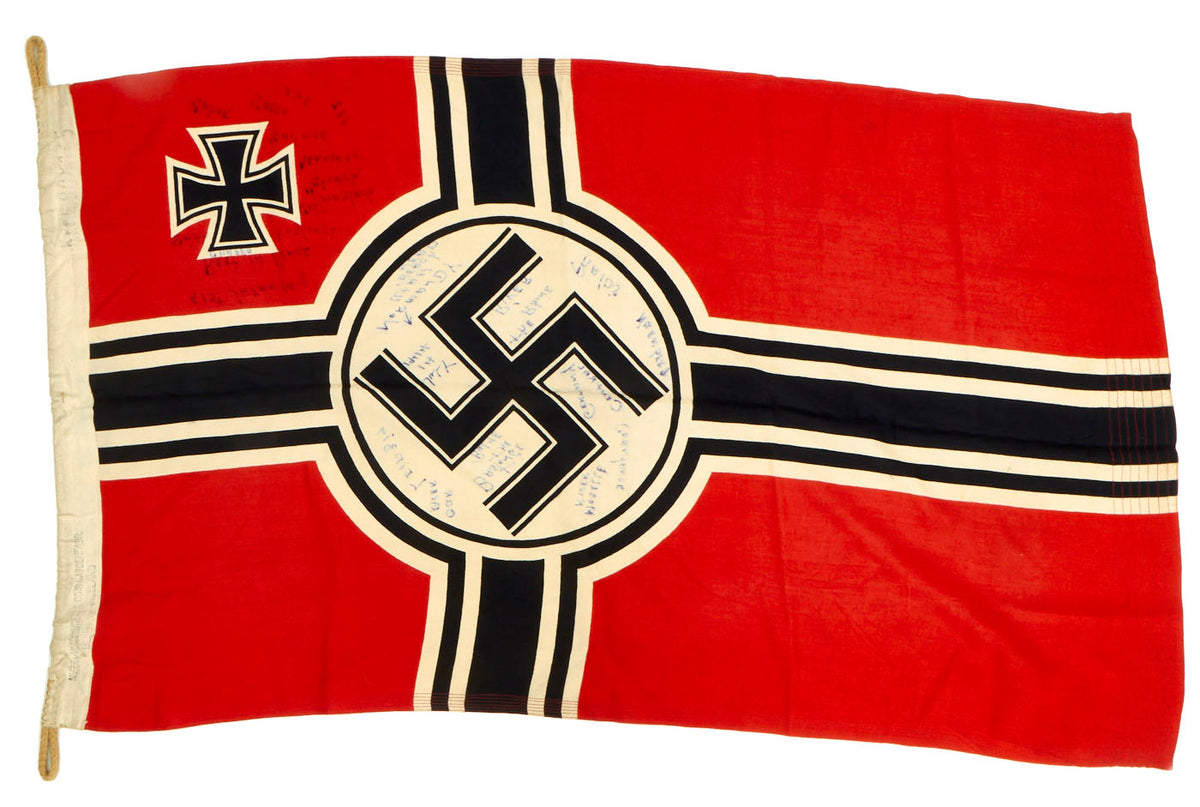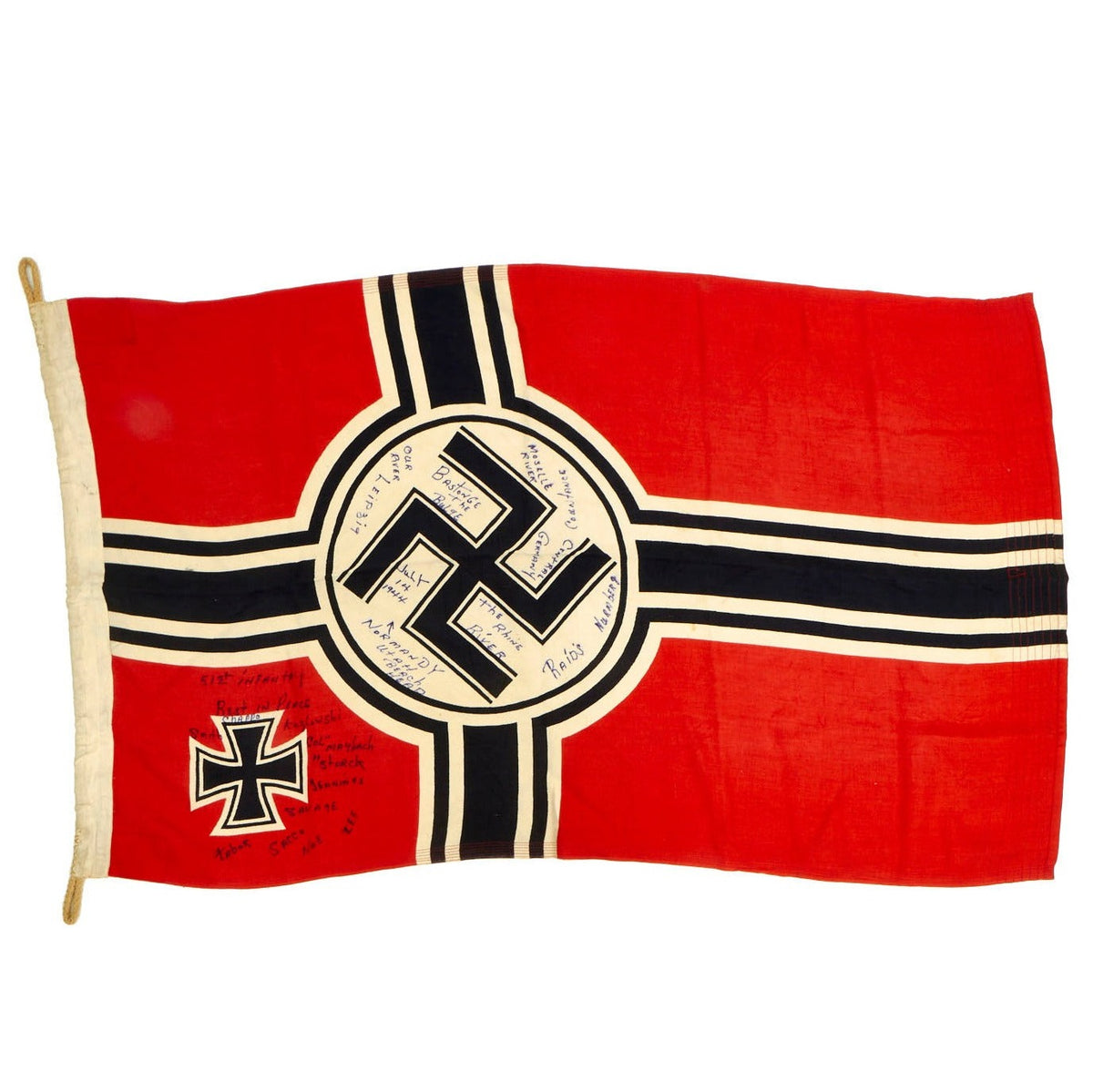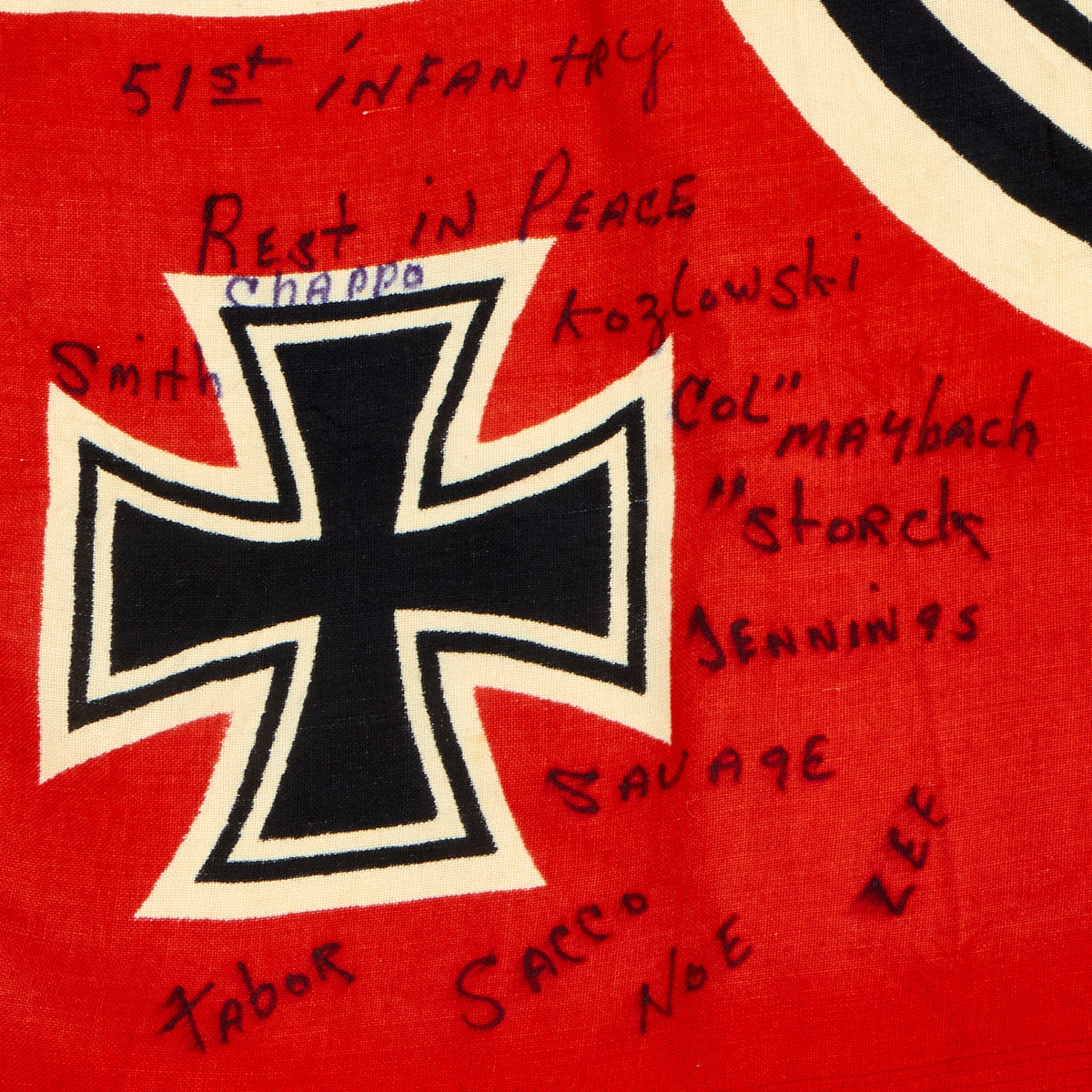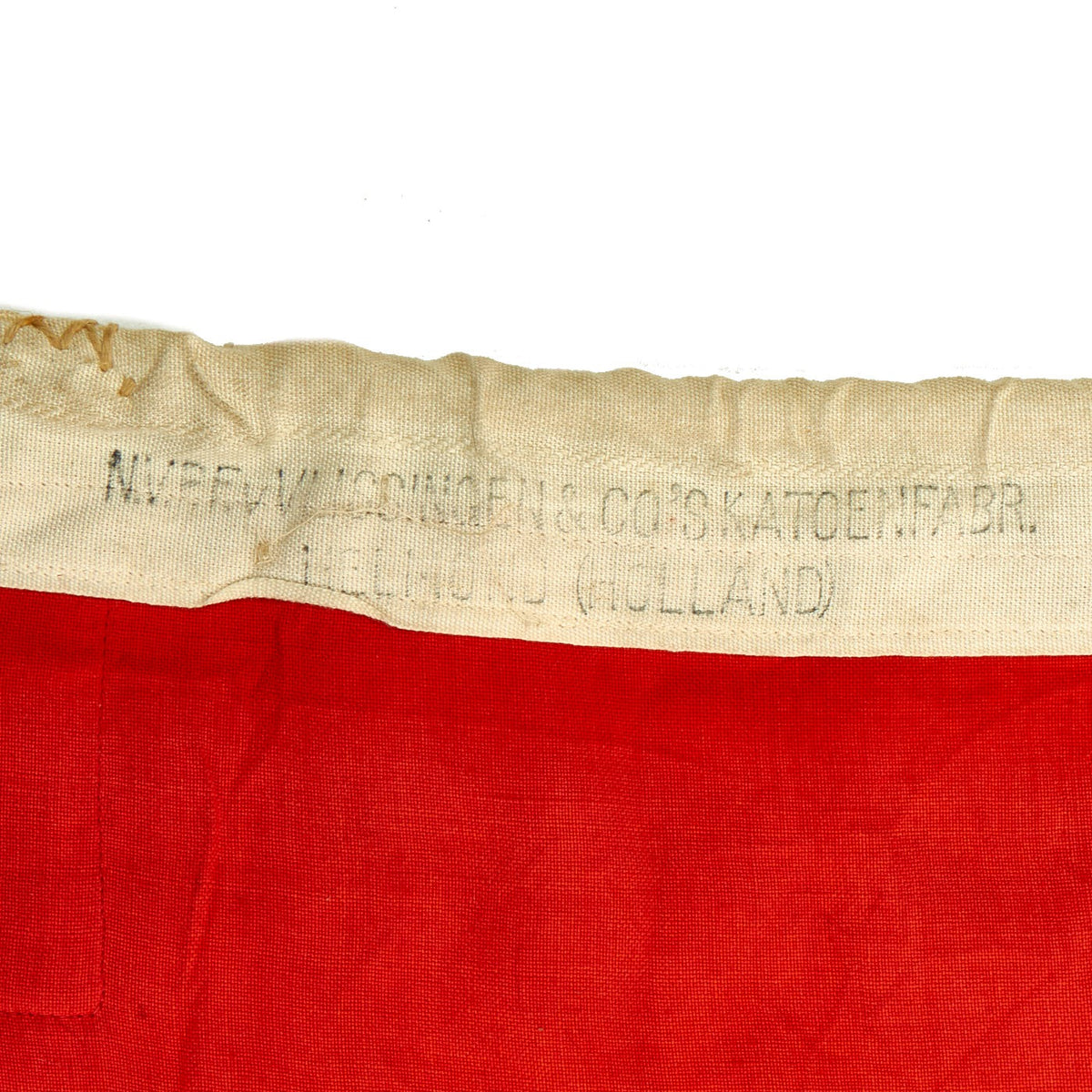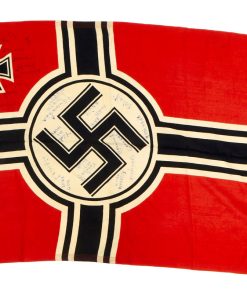Original German WWII Captured Battle Flag Signed by American 51st Armored Infantry Battalion, 4th Armored Division – 50” x 30” Original Items
$ 2.395,00 $ 598,75
Original Item: One-of-a-kind. This is incredible. Perhaps one of the most impressive captured German flags we’ve ever offered. This German WW2 Reichskriegsflagge features the names of fallen comrades with locations of where they fought, trained and more. Most of the men were members of the 51st Armored Infantry Battalion, 4th Armored Division.
The flag itself measures 50” x 30” and still features the manufacturers information stamped on the header as N.V.P.F. v VLISSINGEN & CO’S KATOENFABR. HELMOND (HOLLAND). It is also faintly marked Kr. FL. 80 x 135, indicating that it is a 80cm x 135cm Reichskriegsflagge (National Battle Flag).
There was such a thing as a “laundry marking kit” long before felt tip pens such as “Magic Markers” or “Sharpies” came along. They used indelible ink and a steel tipped pen with a broad tip to mark fabric that was subject to getting wet. It had a tendency to bleed into the fabric when applied, sometimes making the letters look a bit indistinct. There was also a type of pen that used waterproof ink and had interchangeable felt nubs of different shapes. It was known as a “Speedry” and could write on many different surfaces. These, and similar products, were available in the ’30s and ’40s.
With that being said, all of the writing on the flag was done in the same purple colored ink that was found in these laundry marking kits. If you have ever come across uniforms with what appears to be written or marked on with “purple sharpie”, take another look because it could have been with a laundry kit. Most if not all of the writing appears to have been done by a single soldier, more than likely during the journey home or at the close of the war. Some of the locations written on the central part of the flag are “Leipzig, Bastogne The BUlge, Moselle River, Central Germany, Normandy Utah Beach July 14, 1944, The Rhine River, Nuremberg” and many more!
In the lower left hand corner you can find the names of a few soldiers who made the ultimate sacrifice during the war. The top is marked as “51st Infantry / Rest in Peace” and lists a few names, one of which being Colonel Maybach. Lieutenant Colonel Alfred A. Maybach was posthumously awarded the Silver Star Medal for conspicuous gallantry and intrepidity in connection with military operations against the enemy as Commanding Officer, 51st Armored Infantry Battalion, 4th Armored Division, during World War II. The other names are just written as last names and are fairly common making them extremely difficult to search. So if you are able to get the resources together and have the time to search rosters, this is the perfect project for you!
Comes ready to research and display!
4th Armored Division
The 4th Armored Division was an armored division of the United States Army that earned distinction while spearheading General Patton’s Third Army in the European theater of World War II.
The 4th Armored Division, unlike most other U.S. armored divisions during World War II, did not officially adopt a nickname for the division during the war. However, their unofficial nickname “Name Enough” came into use postwar; the division commander having said, “Fourth Armored Division was name enough”; “They shall be known by their deeds alone.” The 4th was named the “Breakthrough” division in 1954, but that name was eventually discontinued.
The division was organized as a full Armored Division in May and June 1942 under the command of Major General John Shirley Wood. It left Pine Camp for Camp Forrest for the Tennessee maneuvers in the Cumberland Mountains held in September and October. In mid-November, it was transferred to the Camp Ibis Desert Training Center (DTC) in the California-Arizona maneuver area and was the first Armored Division to occupy Camp Ibis near Needles, California in the Mojave Desert, which was close to the Arizona and Nevada borders. On 3 June, the 4th AD arrived at Camp Bowie, Texas, an armored training center located in central Texas near Brownwood, for more maneuvers until about December when it departed for Camp Myles Standish in Massachusetts for winter training. On 29 December, the 4th AD departed Boston to conduct training in England in preparation for the invasion of Normandy.
Fast Shipping with Professional Packaging
Thanks to our longstanding association with UPS FedEx DHL, and other major international carriers, we are able to provide a range of shipping options. Our warehouse staff is expertly trained and will wrap your products according to our exact and precise specifications. Prior to shipping, your goods will be thoroughly examined and securely secured. We ship to thousands clients each day across multiple countries. This shows how we're dedicated to be the largest retailer on the internet. Warehouses and distribution centres can be located throughout Europe as well as the USA.
Note: Orders with more than one item will be assigned a processing date depending on the item.
Before shipping before shipping, we'll conduct a thorough inspection of the items you have ordered. Today, the majority of orders will be delivered within 48 hours. The delivery time will be between 3-7 days.
Returns
The stock is dynamic and we cannot completely manage it because multiple stakeholders are involved, including our factory and warehouse. So the actual stock may alter at any time. It's possible that you may not receive your order once the order has been made.
Our policy is valid for a period of 30 days. If you don't receive the product within 30 days, we are not able to issue a refund or an exchange.
You can only return an item if it is unused and in the same state as the day you received it. You must have the item in its original packaging.
Related products
Uncategorized
Uncategorized
Australian WWII Owen MK1 Machine Carbine SMG Custom Fabricated Replica with Sling Original Items
Uncategorized
Uncategorized
Uncategorized
Uncategorized
Angolan Rebel 1970s era 60mm Inert Display Mortar from Angolan Civil War Original Items
Uncategorized
Uncategorized
Uncategorized
Uncategorized
Uncategorized
Uncategorized
Uncategorized
Armored Burgonet Helmet & Polearm from Scottish Castle Leith Hall Circa 1700 Original Items
Uncategorized
Uncategorized
